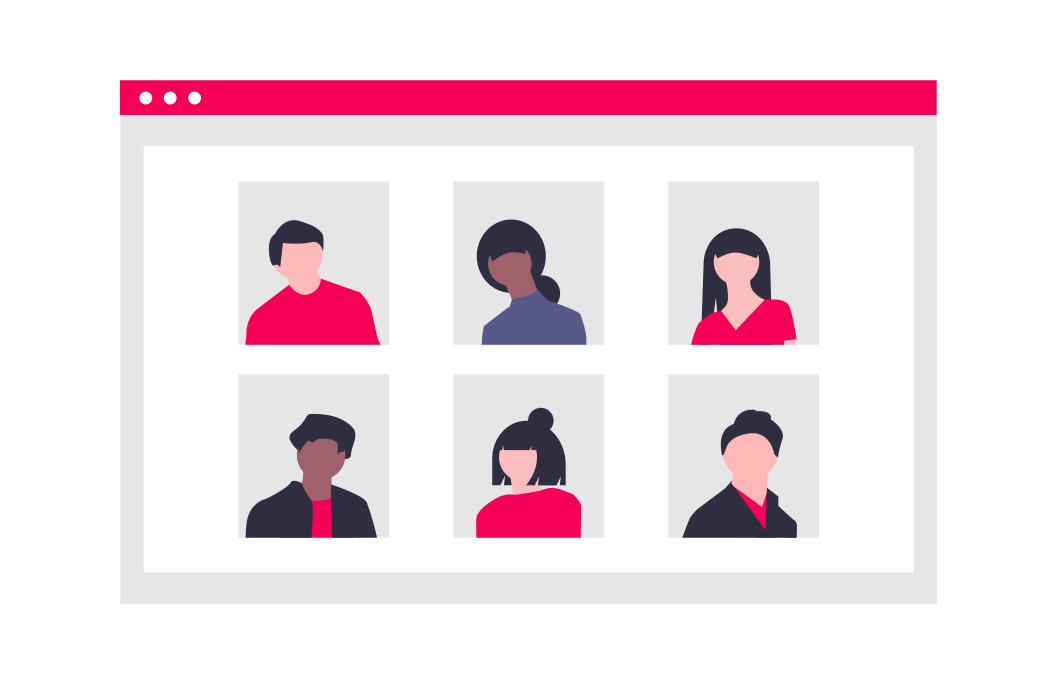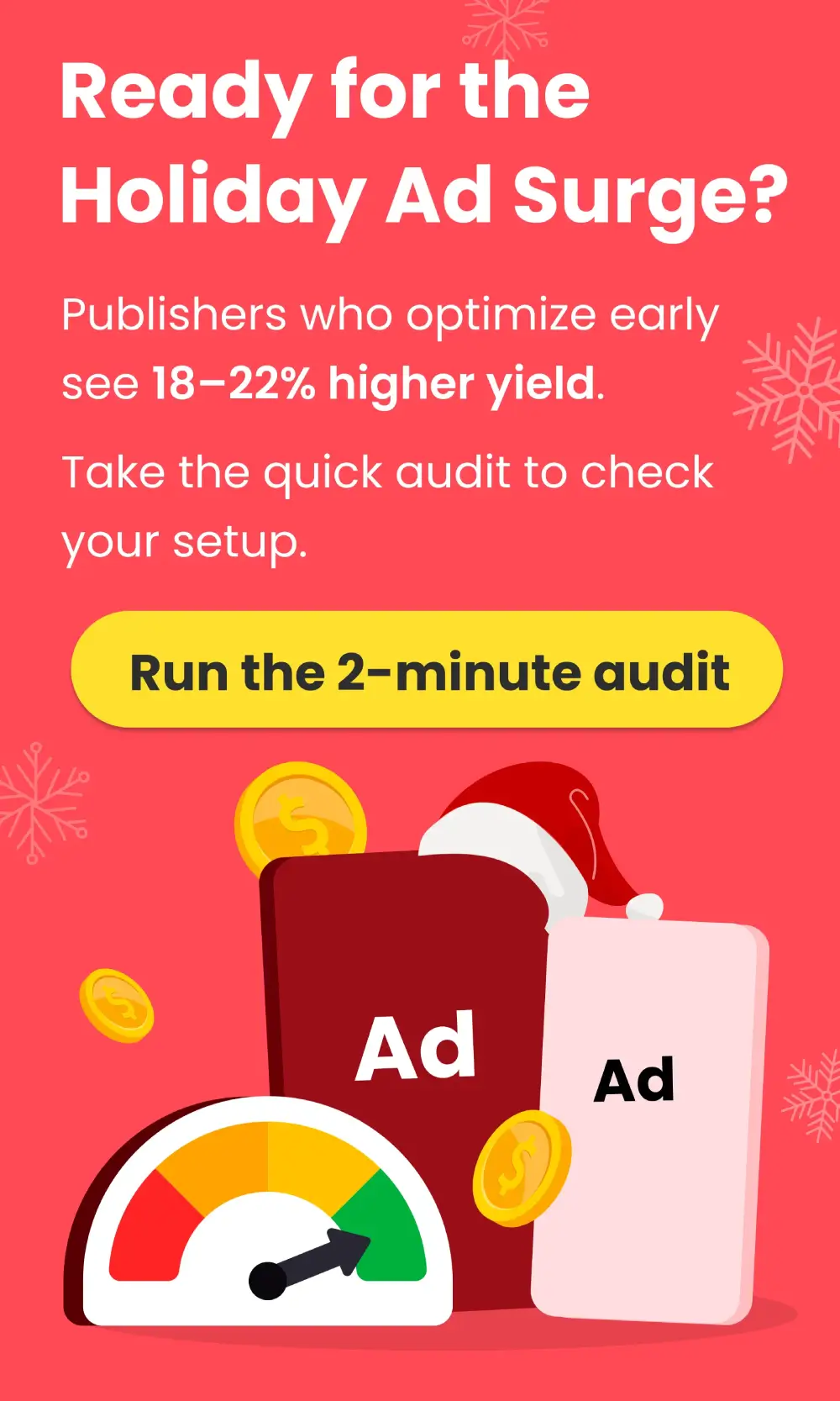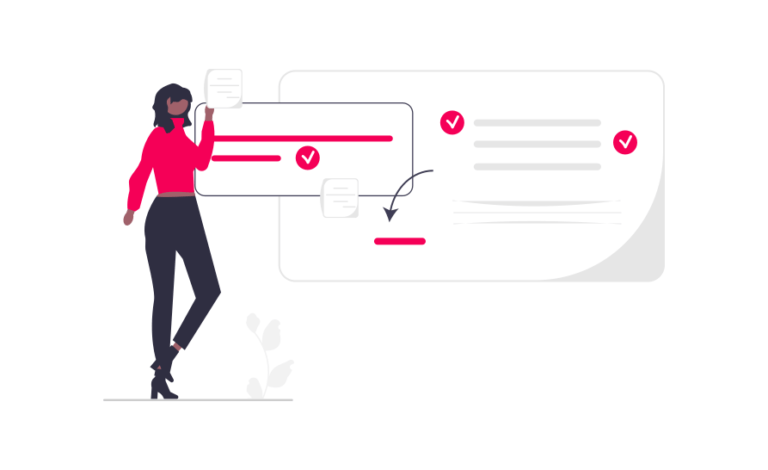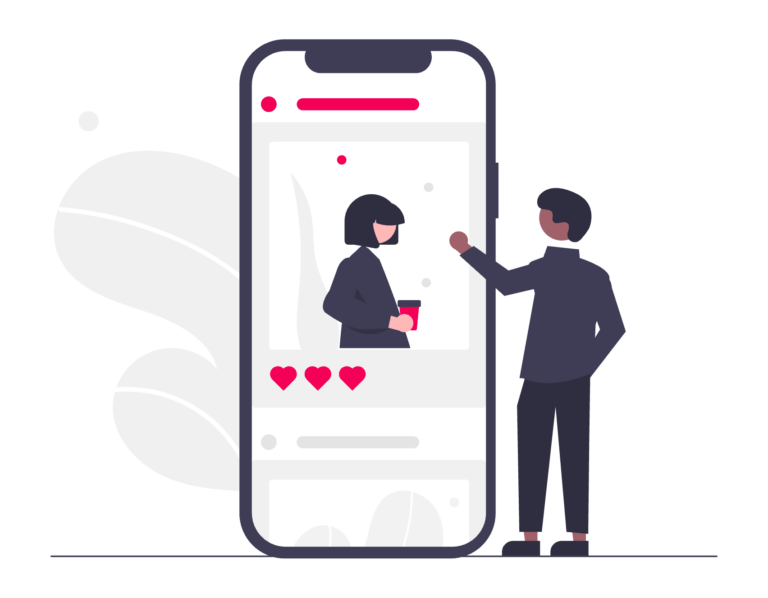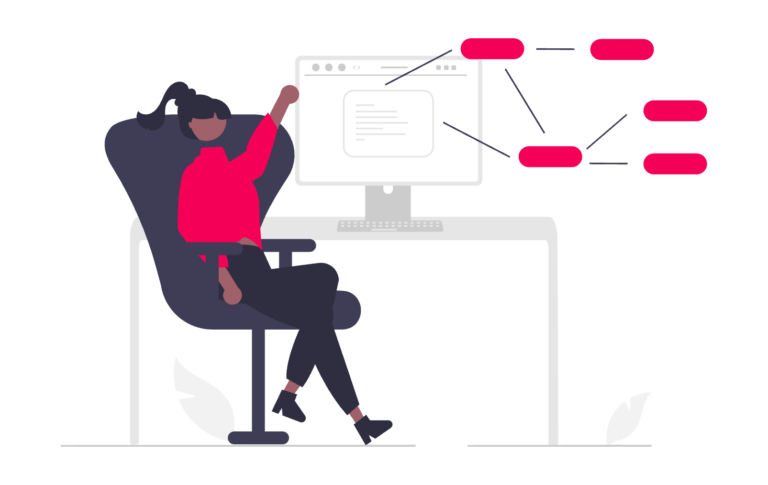Why do some people convert on a website while others don’t? The science of conversion optimization is psychology. By understanding what motivates someone to take action, you can design a website that encourages conversions.
Conversion optimization – the definition is as complicated or as simple as you would like it. You could trace it back to lead generation or e-commerce marketing, taking into account the copy text, layouts, images and analytics, or you can simply define it is “how you get the customer to click where you want”.
One of my favorite definitions for conversion optimization is “the method of creating a desirable experience” for a website or landing page. The goal here is converting traffic to meet your conversion goals.
Indeed, when you sell anything online, the goal is creating the experience; just as with general marketing; you don’t sell the product – you sell the sizzle, the benefits, and the experience the customer is guaranteed to have.
So what is the experience that you create for your visitors? This is not merely concerning advertisers, who have to depend on their advertising team and their associations and partners. But it’s also about also web publishers – the ones who ultimately drive the industry, creating content worth clicking about.
So as a writer, web entertainer or educator, the publisher’s job is to create an experience for the user that is worth the money or time he or she is about to spend.
Why is it Important to Know Your Customers?
It’s important to know your customers for better conversion optimization for a number of reasons.
First, you need to understand what your customers want and need in order to craft offers that they’re more likely to convert on.
Second, you need to know your customer’s pain points in order to address them in your copy and improve your conversion rate.
Third, you need to segment your customers to target them more effectively with personalized messages.
Finally, by understanding your customers better, you can create more compelling content and offers to help you with your conversion optimization efforts.

The Psychology of Our Products
The user is looking for an experience with value, something palpable that they can walk away from feeling motivated and even inspired. So in terms of psychology, ask yourself what type of experience would be seen as valuable from the consumer’s point of view.
Well, what type of experiences or events in life (that’s right, offline!) would a person remembers fondly and considers valuable? I’m thinking.
- A parent’s lesson
- First love
- Marriage
- First job
- Career promotion
- A child being born
- The loss of a loved one
Hard to deny, right? These are the things that matter in life, the important things in life. While working on your conversion optimization, you need to consider all of these experiences.
What do all of these life experiences have in common? They’re not just emotional experiences but are also memorable events for which our brain works extra hard to store safely in our memory.
Dr. Michael Rosenbloom, a neurologist and the director of HealthPartners’ Memory Clinic in St. Paul, states that it’s actually the frontal lobe of our brain that “decides what’s important, what’s not important and what we can forget”.
The temporal lobes and hippocampus are where memories are stored. Rosenbloom continued, “a lot of times our experiences influence how good our memory is. For instance, I find artists have really good visual memories. For people who teach or are writers, their verbal memories are better”.
Lastly, the memories go into the cortex for long-term storage. Rosenbloom said there are different types of memories, including episodic, working, semantic, trivial, and procedural memory.
The most interesting part of the interview was when the doctor stated that people “tend to retain that knowledge most relevant to their own careers and interests”.
And that’s the key – relevancy. An emotional experience that a person remembers for a lifetime is always relevant to that person’s “real life”, near to their heart and their “core values”.
This defines their moral compass and long-term outlook on social responsibility. Just think of the phenomenon that happens in advertising when a product becomes ingrained with a person’s values or positive memories.
– Think about the aging grandfather who reminisces about having M&Ms with his father and how positively he associates that brand.
– Think about the parent who loves BMWs or Volvos because he/she once had a car wreck but who survived because of the safe design of the vehicle.
– Think of the guy who smokes because he grew up wanting to look cool, like Humphrey Bogart, Marlon Brando and James Dean.
In all of these cases, the product has fused together with the consumer’s personality – it is not just a part of their daily routine. But it’s now a part of their memories, a part of their ego and identity, and indeed a key to understanding their lifestyle and deeper motivations. It has progressed beyond short-term memory.
That’s the type of lifelong customer every company wants, and it does seem as if we go bonkers trying to figure out how to ingratiate ourselves into consumers’ private lives.
We know it works and has been done, and we can quote case studies that show us that it can happen. But do we really know how to stay relevant to a consumer’s life? Are we going after the short-term memory or the long-term “experience”?
Before you start publishing content and reaching out to these consumers, consider how well you understand what drives human behavior for achieving success with conversion optimization.
Perhaps the most epic failure of any marketer, writer, magazine or publishing house is to not understand – or care – about the consumer’s needs.
Focus on Your Target Audience
A company that is out of touch with its targeted audience is always going to be “grasping at straws” since it will be concentrating on learning the market (and all these meaningless marketing phrases and rhetoric) and never once stop to consider what the individual, the human being, is looking for.
Just think for a moment how many “how to” or “why does…” or “have you ever” titles you come across in a week’s time and just how quickly these articles grab your attention.
All of these popular keyword phrases suggest that the web viewer has a specific question and wants to find the answer. An SEO strategist will write content that answers the question, branding himself to be a positive experience.
Three Essentials to Conversion
While improving your conversion optimization strategy, be sure to keep the below-mentioned essentials in mind. Take a look.
1. Am I developing content for my audience?
Is your content relevant to what your audience needs? What have you researched about these people, and why can you be certain they would be interested in reading this type of content?
2. What is the incentive for your audience?
Imagine that you were in a group and contributing to a conversation. You observe everyone at the table, the self-involved guy who only talks about himself. The joker is always trying to be funny.
The question guy, who always wants to know how to do this and that. Then there’s the guy who completely captivates the group because he wants to share a secret to his success with everyone. Guess who wins? He wins because he brings incentives to the table. He’s not selling; he’s not hyping or taxing everyone’s energy by wanting something.
No doubt, if that last person was you and you addressed something that everyone in the group needed, you would hold attention. And to ignore what you were going to say would be the “elephant in the room” – it’s the sort of topic that demands a response.
So what are you providing your audience?
Why does this content matter in terms of short-term memory (as in, “Oh, that’ll be useful when I…”) and, even better, in long-term memory (as in, “Wow, I’ve never thought of that before. This might change my whole approach!”) You see the difference?
3. How Are You Perceived?
After you understand the art of listening to your audience (by researching what your target group wants) and providing it for them, you have to consider presentation. Are you projecting the same feelings and philosophies as you aim for through your web presence?
Think of it in terms of door-to-door sales. A homeowner is not going to listen to a slovenly-dressed older man trying to sell Avon products.
The image is part of your product. So after you establish who your audience is, what they need from you (that relates to their own lives), and what incentive you bring them, it’s time to consider how you are being perceived.
Your website content might be excellent in quality, but is there a conflict in the way you come across versus your useful information? Ask someone to evaluate your content for you. Do you come across as bragging, as morally questionable (this is a major problem for some people on social networking; if you frequently share a controversial opinion that might offend other people) or in some way reflect the exact opposite of what you’re saying? Think about the little details.

Understanding the Consumer’s Motivation for Buying
Now that we’ve discussed the importance of understanding the consumer’s point of view for conversion optimization, let’s discuss the consumer’s motivations in buying products and services.
Don’t aim at manipulating consumers. They instantly reject hype and are, for the most part, leery of new people trying to sell them something.
In the book Influence by Dr. Robert Cialdini, it is suggested that there are nine ways to target a consumer’s psyche. The first five are emotionally based motivators. They include:
Reciprocity
It’s not just about incentives, which can easily be faked. (For example, “free stuff” can be an incentive no one cares about).
Reciprocity involves helping your audience to get something they want before asking them for something you want. It appeals to our subconscious ego and our instinctual nature to protect and provide for ourselves before giving away our excess.
This explains why so many companies are willing to give free information or free software away as a gift just for brand recognition.
Obligation
Creating obligations or commitments can help to create brand loyalty. Simply committing to the act of liking a page or signing up for a newsletter will create in the user a commitment to the company. It is in our instinct to be committed to our friends, family and causes we believe in.
So regardless of the money spent, your first goal should be to win a person’s commitment so you can win an ally. This will definitely lead you to better conversion optimization.
Social Influence
Peer pressure remains one of the strongest human motivators, and it is just as powerful a force negatively as it is positively. Many people are afraid to go “against the grain” of popular belief or to appear out of touch with the lives of their own social groups.
Social proof is what you might call it, when everyone else has tried something or accomplished something, which immediately creates a need in the individual to keep up and express an opinion – not for the company, of course, but for the heavy peer pressure that we all feel to act, speak and contribute to the group.
So next time you design a landing page, be sure to add social proof. This conversion optimization strategy will definitely provide you with some significant results.
Personalization
Naturally, talking to a person one-on-one, or at least giving the illusion of such, is going contrary to the image of a large soulless company that only wants to boost profit.
The very idea that a company fulfills a person’s need, but doesn’t care about their actual experience, is enough to send us – in droves – to a competitor.
It’s why some people hate Walmart, hate Apple, hate Microsoft, and so on because they perceive that the large company is not individually concerned and is out of touch with a person’s unique needs.
So reaching out personally and emotionally and making yourself (or your company) accessible is the best way to show your audience that they’re not just a source of revenue – but a lifelong business relationship is what you really want.
Authority
Much like people value social proof, they also respect cited authority. It’s instinctual motivation, coming from the fact that mammals tend to follow “alphas” of the species in hopes of benefiting from the association. And so whenever we hear that a celebrity likes this product or that an expert (a doctor or a self-made business person) has achieved something we would like, that’s a powerful incentive to listen, to read, to bookmark. Authority can actually be from any source, assuming your target audience sees this person or company as someone deserving their attention. Thus, you benefit from the association.
Financial Aspects
The other four keys Dr. Cialdini mentioned involved financial strategy, and while we know that consumers are willing to pay big bucks (more than is necessary) for something that fulfills their needs, we would be remiss in not considering financial data regarding the industry, since this is precisely what your competitors are studying.
These include:
- Limited Time Offers (Still a classic, the old impulse buy motivator that suggests if you don’t buy now, you lose savings).
- Smart Pricing (Being aware of the market price and pricing products according to quality, perception and competition).
- Timing (People are more inclined to buy when they have already made a purchase, not when they’re still deciding whether or not to buy).
- Color Theory (Influencing a customer’s mood with appropriate colors; usually colors associated with the positive experience you’re selling).
And by the same logic, the emotion conveyed in images, voice, or writing can be used like colors – to manipulate moods and associate a product with something beyond a transaction, a lifestyle, a feeling and a dream.
I hope this helps you in devising a conversion strategy or testing a hypothesis. Next week, we will look at how conversion optimization can help publishers.
FAQs – Conversion Optimization
A conversion optimization strategy is a set of business practices aimed at increasing the percentage of visitors who take action on a website. The actions could be such things as making a purchase, signing up for a newsletter, or anything else that the business wants to encourage.
Here are five general steps that we believe can help you to optimize your conversions:
1. Attract: Creating content that speaks to your targeted customers and makes them remember you are essential to getting the sale.
2. Engage: You should be able to get the visitor to pay attention to your message so they remember you long enough to come back to you.
3. Convert: You have their attention and can present the product or service in a way that will make them want it.
4. Close: If the visitor does not commit immediately, you should incentivize them to close the sale today.
5. Consistency: Offer your customers follow-up and additional content. Be sure to deliver on your promises.
These five steps will lead you to better conversion optimization.
Conversion optimization is the process that helps businesses identify hindrances and opportunities for improvement in the way customers experience their offers. This involves identifying steps in the buying cycle and focusing on how those steps can be made more efficient or effective with changes to the offer, the customer experience, or the website.
Ankit is a co-founder @ AdPushup (a tool which helps online publishers optimize ad revenues) and loves online marketing & growth hacking.
